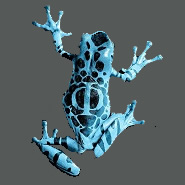Yep, it is true, my friends…
I am not really all that surprised, actually.
The following is excerpted from an article on the BBC website…
Birds hold ‘funerals’ for dead
By Matt Walker
[…] The revelation comes from a study by Teresa Iglesias and colleagues at the University of California, Davis, US.
They conducted experiments, placing a series of objects into residential back yards and observing how western scrub jays in the area reacted.
The objects included different coloured pieces of wood, dead jays, as well as mounted, stuffed jays and great horned owls, simulating the presence of live jays and predators.
Alarming reaction
The jays reacted indifferently to the wooden objects.
But when they spied a dead bird, they started making alarm calls, warning others long distances away.
The jays then gathered around the dead body, forming large cacophonous aggregations. The calls they made, known as “zeeps”, “scolds” and “zeep-scolds”, encouraged new jays to attend to the dead.
The jays also stopped foraging for food, a change in behaviour that lasted for over a day.
[…]
(the article closes with these lines…)
Other animals are known to take notice of their dead.
Giraffes and elephants, for example, have been recorded loitering around the body of a recently deceased close relative, raising the idea that animals have a mental concept of death, and may even mourn those that have passed.
Birds have clearly shown themselves to be of very high intelligence. They use tools efectively and are able to solve complex conceptual problems with ease. I am of the opinion that all animals and plants are to one degree or another sentient and conscious and are possessed of emotion, also to one degree or another. Just like us. Anyone who has spent time with animals surely must be well aware of this.
What really struck me from the study was that the jays stopped eating for over a day. That is significant. I will repeat it, in bold, even – the jays stopped eating for over a day. Capiche? That is clearly mourning. Got to be.
A lot of people think of animals as just mindless eating machines that do little else. That assumption is just so very wrong. Have they no eyes, no senses, no thought processes or logic? Such a reality makes me have some rather sad feelings regarding my own species. It does! I do not understand it.
It does bother me that scientists are only now starting to ‘get with the program,’ as it were. Sigh. Well, at least they’re starting. A good thing, surely.
To nicely illustrate the point, I’ll present to you now a reply from the ATS thread on this matter, member phroziac posted this very poignant tale:
Ever had a conversation with a bird? Theyre extremely intelligent, and i have no doubt whatsoever they have emotions… and non speaking species are just as intelligent as speaking ones. Small birds are just physically incapable of speaking because of the size of their uhmn…voice box. Ive caught mocking birds attempting to speak though, lol…..
However, its a similar intelligence to a young child. Not an adult human. Do children understand death? not really.
I owned a male and female cockatiel. The female got sick and died with basically no warning at all….very common for birds…they hide that theyre sick. The male cuddled up with her before she died and stayed cuddled up with her for hours after she died. he got really depressed and quiet and eventually we had to give him away to a friend that had cockatiels to try to help.
He would always whistle the andy griffith song when he was happy lmao….i never heard him do it again after his lady died……
So, birds do have an emotional response to other birds dying. But im not sure they understand death.
And there you go… Reality. Poor bird.
Also available should you desire it is the research paper that was used as BBC“s source, published at Science Direct and titled Western scrub-jay funerals: cacophonous aggregations in response to dead conspecifics. As with most science journals, you can read the abstract, but you have to buy the paper (for $31.50) to read the actual research. Here’s the start of the abstract:
All organisms must contend with the risk of injury or death; many animals reduce this danger by assessing environmental cues to avoid areas of elevated risk. However, little is known about how organisms respond to one of the most salient visual cues of risk: a dead conspecific. Here we show that the sight of a dead conspecific is sufficient to induce alarm calling and subsequent risk-reducing behavioural modification in western scrub-jays, Aphelocoma californica, and is similar to the response to a predator (a great horned owl,Bubo virginianus, model). Discovery of a dead conspecific elicits vocalizations that are effective at attracting conspecifics, which then also vocalize, thereby resulting in a cacophonous aggregation. Presentations of prostrate dead conspecifics and predator mounts elicited aggregations and hundreds of long-range communication vocalizations, while novel objects did not. In contrast to presentations of prostrate dead conspecifics, presentations of a jay skin mounted in an upright, life-like pose elicited aggressive responses, suggesting the mounted scrub-jay was perceived to be alive and the prostrate jay was not. There was a decrease of foraging in the area during presentations of prostrate dead conspecifics and predator mounts, which was still detectable 24 h later. Foraging returned to baseline levels 48 h after presentations. Novel objects and mounted jays did not affect foraging. Our results show that without witnessing the struggle and manner of death, the sight of a dead conspecific is used as public information and that this information is actively shared with conspecifics and used to reduce exposure to risk.
Peace.




































 What’s All This, Then? is copyright © 2009 to the present by Ignatius F Makarevich - All rights reserved worldwide.
What’s All This, Then? is copyright © 2009 to the present by Ignatius F Makarevich - All rights reserved worldwide.


